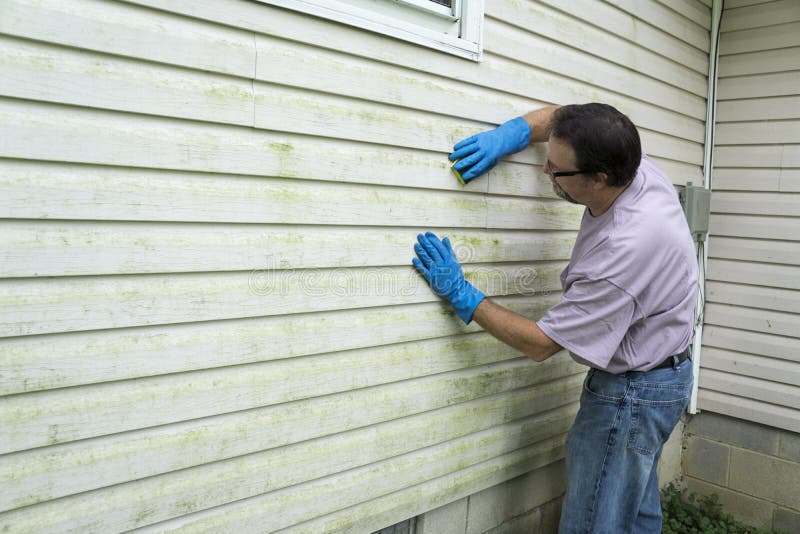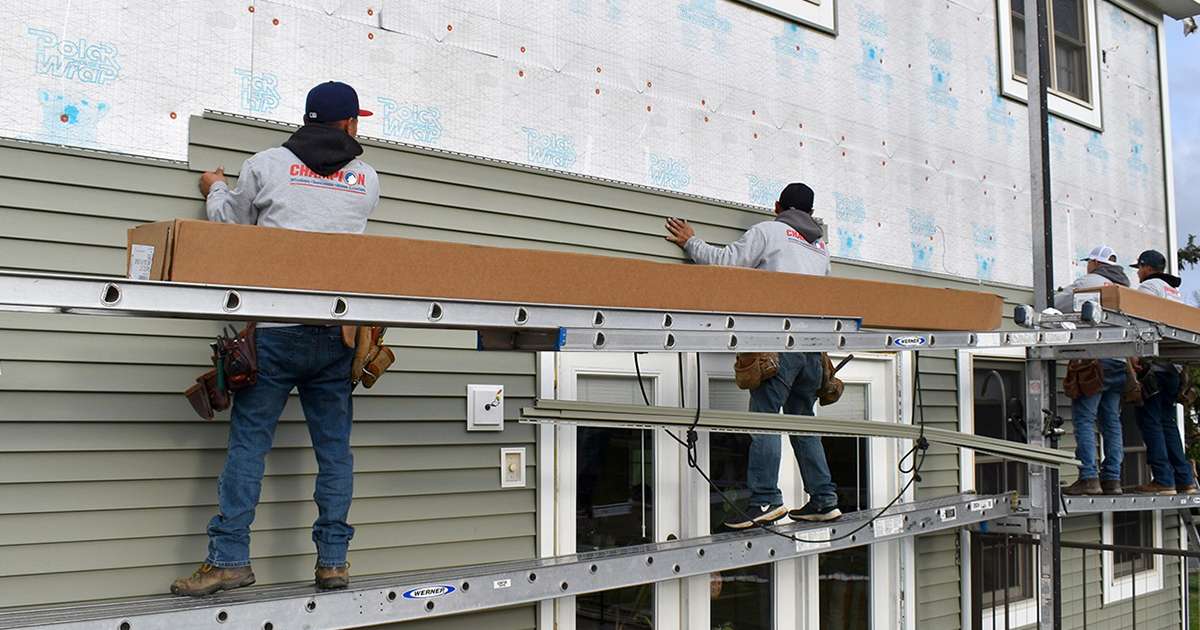Morris Siding Contractor with Years of Expertise in Home Exterior Upgrades
Morris Siding Contractor with Years of Expertise in Home Exterior Upgrades
Blog Article
The Necessary Guide to the Various Kinds of Siding and Their Distinct Benefits
In the realm of home improvement, choosing the appropriate exterior siding is a critical decision that impacts both visual allure and functional efficiency. The range of materials available, such as timber, vinyl, fiber brick, metal, and concrete, each offer one-of-a-kind benefits that accommodate various demands and preferences. Comprehending these distinctions can considerably boost the durability and value of a building - morris siding contractor. With so many alternatives to take into consideration, which exterior siding product genuinely stands out for your specific project? Discovering these selections can result in notified choices that line up with both design and usefulness.
Wood House Siding
Wood exterior siding, a popular selection for property outsides, provides an ageless visual that integrates all-natural beauty with architectural stability. This exterior siding product is readily available in numerous styles, including clapboard, tiles, and board-and-batten, permitting homeowners to personalize their appearance to match their style preferences. Timber siding is commonly crafted from long lasting varieties such as cedar, redwood, or want, which are known for their resilience and ability to endure ecological stressors.
One of the main benefits of wood home siding is its exceptional insulation properties, which can add to power efficiency and reduced heating prices. In addition, wood house siding is naturally degradable, making it an eco-friendly choice when sourced sustainably. Normal upkeep, including paint or discoloration, can lengthen its life-span and enhance its look, allowing home owners to protect the all-natural appeal of the wood.
Nevertheless, prospective disadvantages include sensitivity to bugs, rot, and weather damage, necessitating ample therapy and maintenance - morris siding contractor. In spite of these issues, when appropriately cared for, wood house siding can supply a lovely and durable option that boosts the character of a home while offering a cozy, welcoming atmosphere

Plastic Exterior Siding
Plastic siding has become a leading selection for property owners looking for a low-maintenance outside choice that incorporates longevity and cost. This flexible material is crafted from polyvinyl chloride (PVC), making it resistant to various weather problems, consisting of wetness and UV rays. Because of this, plastic home siding does not warp, rot, or fade, making sure durable visual allure.
Among the key advantages of vinyl home siding is its comprehensive array of styles and colors, enabling homeowners to accomplish the desired search for their building without the demand for frequent repainting. Furthermore, vinyl siding is very easy to set up, which can significantly lower labor prices throughout construction or remodelling tasks.
Vinyl house siding additionally adds to energy performance. Several alternatives attribute insulation support, which boosts thermal performance, assisting to keep comfy interior temperatures and possibly reducing power bills. Its smooth surface assists in easy cleansing, calling for only routine cleaning with a garden tube to eliminate dust and particles.
Fiber Cement Siding
Fiber concrete siding has acquired grip among home builders and home owners alike due to its impressive combination of durability and visual adaptability. Composed of a mixture of sand, cellulose, and concrete fibers, this house siding alternative is engineered to hold up against go to my blog severe climate condition, including high winds, hefty rain, and temperature level variations, making it a lasting choice for domestic outsides.

Among the primary benefits of fiber cement home siding is its resistance to bugs, such as termites, and its non-combustible nature, offering enhanced fire security. morris siding contractor. In addition, it is offered in a broad variety of structures, styles, and colors, enabling home owners to accomplish their desired visual without compromising efficiency
One more benefit is its reduced upkeep demands; fiber concrete siding generally needs paint or staining every 5-10 years, which is much less regular than various other products. Its long life contributes to a lower overall expense of possession, as it minimizes the need for regular repair work or substitutes.
Ultimately, fiber concrete exterior siding stands for an outstanding investment for those seeking a durable, appealing, and versatile exterior choice, incorporating both kind and function to enhance the home's curb appeal.
Steel Exterior Siding
The attraction of metal exterior siding lies in its durable longevity and modern-day aesthetic allure, making it a preferred choice for contemporary architecture. Offered in products such as light weight aluminum and steel, steel house siding provides an array of colors and finishes, permitting house owners to accomplish an individualized look that complements their layout vision.

Energy performance is an additional substantial advantage, as several steel home siding products are created with insulation alternatives that help manage interior temperature levels. This can bring about decreased power prices gradually. In addition, steel home siding is usually recyclable, making it an eco-friendly selection for sustainability-minded property owners.
The installation process for steel exterior siding can be relatively simple, resulting in a quicker turn-around time for building jobs. On the whole, steel home siding combines performance and design, making it a practical option for those seeking a enduring and aesthetically attractive outside surface.
Block and Rock Home Siding
Block and stone exterior siding stands out as an ageless selection that enhances the visual beauty of any kind of home. Understood for their resilience and reduced upkeep, anonymous these products offer an exceptional roi while elevating the building's aesthetic charm. Offered in numerous shades, appearances, and patterns, brick and rock can be tailored to match diverse building styles, from conventional to modern-day.
One of the primary benefits of block and rock exterior siding is their power efficiency. Both products possess natural shielding properties that assist control interior temperatures, possibly reducing cooling and heating costs. In addition, they provide exceptional fire resistance compared to other house siding choices, adding to improved security.
Another my company benefit is their durability. Block and stone can last for years, often calling for minimal maintenance beyond occasional cleansing. Unlike timber house siding, they are impervious to pests and rot, making sure a resilient outside that endures the components.
Conclusion
In summary, the choice of exterior siding significantly affects a home's aesthetic allure, power effectiveness, and maintenance needs. Each type of house siding-- whether timber, plastic, fiber concrete, brick, or steel and stone-- offers special advantages tailored to different home owner preferences and environmental conditions. Comprehending these options makes it possible for educated decisions that enhance both the durability and visual beauty of property outsides. Eventually, selecting the ideal house siding is crucial for achieving an equilibrium in between performance and style in property architecture.
One of the main advantages of timber home siding is its outstanding insulation homes, which can add to energy efficiency and lower heating expenses. In addition, timber siding is eco-friendly, making it an environmentally friendly alternative when sourced sustainably.One of the primary benefits of metal siding is its resistance to numerous ecological variables.Power efficiency is another significant advantage, as several steel siding products are developed with insulation options that help regulate interior temperature levels. Each type of home siding-- whether wood, vinyl, fiber metal, brick, or concrete and rock-- uses one-of-a-kind advantages tailored to various property owner choices and ecological conditions.
Report this page